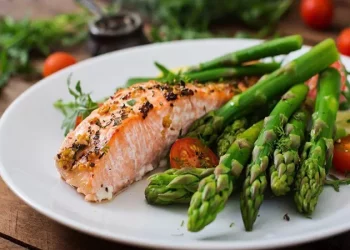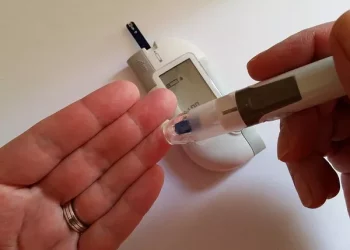Managing diabetes effectively requires a combination of medical care, lifestyle changes, and dietary adjustments. Among these, diet plays a pivotal role in controlling blood sugar levels. One of the most important dietary considerations for individuals with diabetes is the glycemic index (GI), a ranking system that measures how quickly a food raises blood sugar levels. Foods with a low GI help stabilize blood sugar, offering a better alternative to high-GI foods that can cause spikes. In this article, we will explore the best low glycemic foods for diabetics and how incorporating them into daily meals can improve overall diabetes management.
Understanding Glycemic Index and Its Importance for Diabetics
Before delving into the best low glycemic foods for diabetics, it is essential to understand the concept of the glycemic index. The glycemic index is a scale from 0 to 100 that ranks carbohydrates based on how they affect blood glucose levels. Foods that have a high GI are digested and absorbed quickly, leading to a rapid spike in blood sugar. Conversely, low GI foods are absorbed more slowly, resulting in a gradual increase in blood sugar, which helps prevent blood sugar spikes that are often detrimental to diabetic health.
-
Low GI foods have a glycemic index of 55 or below.
-
Medium GI foods fall within the range of 56 to 69.
-
High GI foods have a GI of 70 or above.
For individuals with diabetes, consuming low GI foods can help manage blood glucose more effectively, reduce insulin resistance, and minimize the risk of complications associated with high blood sugar levels.
The Role of Low Glycemic Foods in Diabetes Management
Incorporating low GI foods into the diet offers several benefits for diabetics:
Better Blood Sugar Control: Low GI foods lead to more stable blood glucose levels, helping avoid extreme fluctuations in blood sugar.
Reduced Insulin Resistance: A diet rich in low GI foods may improve insulin sensitivity, helping the body use insulin more efficiently.
Improved Cardiovascular Health: Many low GI foods are rich in fiber, antioxidants, and healthy fats, which can support heart health, a key consideration for diabetics at increased risk for cardiovascular disease.
Weight Management: Low GI foods tend to be more filling, helping to control hunger and manage weight. Since excess weight can contribute to insulin resistance, maintaining a healthy weight is crucial for managing diabetes.
Reduced Risk of Long-term Complications: Consistently maintaining stable blood sugar levels can reduce the risk of complications like neuropathy, retinopathy, and kidney disease, common in people with poorly managed diabetes.
Best Low Glycemic Foods for Diabetics
A wide variety of foods with low glycemic indices can be incorporated into a diabetic-friendly diet. These foods not only help stabilize blood sugar but also provide essential nutrients. Below is a breakdown of some of the best low glycemic foods for diabetics across different food categories.
1. Vegetables
Vegetables are among the best foods for diabetics, particularly non-starchy vegetables, which are low in calories and carbohydrates while being high in fiber and essential vitamins.
Leafy Greens: Vegetables like spinach, kale, and Swiss chard have a very low GI and are packed with fiber, antioxidants, and vitamins A, C, and K. These leafy greens help regulate blood sugar and support overall health.
Broccoli and Cauliflower: These cruciferous vegetables are not only low in GI but also rich in fiber, making them an excellent choice for blood sugar control. They are also known for their anti-inflammatory properties, which can be beneficial for diabetics.
Zucchini: A non-starchy vegetable that is low in carbs and provides a variety of nutrients, including vitamin C and potassium.
Tomatoes: With a GI of 15, tomatoes are low in sugar and packed with vitamin C and lycopene, which have anti-inflammatory benefits.
Peppers: Bell peppers, especially red, yellow, and orange varieties, are low in GI and high in vitamins A and C, making them an excellent choice for diabetics.
2. Fruits
Many fruits have a high GI, but there are several that are low in glycemic index, making them suitable for diabetics when consumed in moderation.
Berries: Strawberries, blueberries, raspberries, and blackberries all have a low GI and are rich in antioxidants, fiber, and vitamins, making them excellent choices for diabetics.
Apples: Apples have a GI of about 38 and provide soluble fiber, which helps stabilize blood sugar levels and improve digestive health.
Pears: With a GI of 38, pears are a good option for diabetics, providing fiber, vitamin C, and potassium.
Cherries: Cherries have a GI of 22, making them a fantastic low-GI fruit choice. They are also rich in antioxidants that can help reduce inflammation.
Plums: Plums are another fruit with a low GI, offering fiber, vitamin C, and potassium, and they help in maintaining stable blood glucose levels.
3. Whole Grains
Whole grains are an excellent source of fiber and essential nutrients, and many of them have a low glycemic index, making them ideal for diabetics.
Barley: Barley has a GI of 28, making it one of the best grains for diabetics. It is rich in fiber, particularly soluble fiber, which can help control blood sugar.
Oats: Steel-cut oats or rolled oats have a low GI and are full of soluble fiber, which helps in managing blood sugar and cholesterol levels.
Quinoa: Quinoa has a GI of 53, making it a great alternative to higher GI grains. It is high in protein, fiber, and essential minerals like magnesium.
Brown Rice: Brown rice has a GI of 50, making it a much better option than white rice. It contains more fiber and nutrients, such as magnesium, which is important for blood sugar control.
Whole Wheat Pasta: When cooked al dente, whole wheat pasta has a lower GI than traditional white pasta, offering a better choice for diabetics.
4. Legumes and Beans
Legumes, including beans, lentils, and peas, are packed with fiber, protein, and essential nutrients. These foods have a low GI and are an excellent addition to a diabetic diet.
Lentils: With a GI of 21, lentils are an excellent choice for diabetics. They are rich in fiber, protein, and B vitamins, which can help stabilize blood sugar levels.
Chickpeas: Chickpeas, or garbanzo beans, have a GI of 28 and are packed with fiber and protein. They are also a great source of iron and magnesium.
Black Beans: Black beans have a GI of 30 and provide a rich source of fiber, protein, and antioxidants.
Kidney Beans: Kidney beans have a GI of 29 and are an excellent source of fiber, which helps slow down the absorption of sugar into the bloodstream.
Peas: Green peas have a GI of 22 and are a great source of plant-based protein and fiber, helping to control blood sugar levels.
5. Dairy and Dairy Alternatives
While dairy products can sometimes cause blood sugar spikes, there are several low GI options that are suitable for diabetics.
Greek Yogurt: Greek yogurt, especially plain, unsweetened varieties, has a low GI and is rich in protein and probiotics, which support gut health and blood sugar control.
Milk: Although milk has a higher GI than some other foods (about 30 for cow’s milk), it still has a relatively low impact on blood sugar compared to many other carbohydrate-rich foods. Opting for unsweetened almond or soy milk can also offer a low-GI alternative.
Cottage Cheese: Cottage cheese has a low GI and provides protein and calcium, which help in managing blood sugar levels and overall health.
Cheese: Cheese, particularly varieties like cheddar or mozzarella, has a negligible impact on blood sugar levels and can be included in a low-GI diet.
6. Nuts and Seeds
Nuts and seeds are not only low in GI but are also packed with healthy fats, protein, and fiber, making them an ideal snack for diabetics.
Almonds: Almonds have a very low GI and are high in healthy fats, fiber, and magnesium, which can help improve insulin sensitivity and control blood sugar levels.
Walnuts: Walnuts are rich in omega-3 fatty acids, which can reduce inflammation and improve heart health. They have a low GI and provide a good source of protein and fiber.
Chia Seeds: Chia seeds have a low GI and are high in fiber, omega-3 fatty acids, and antioxidants, making them an excellent food for blood sugar management.
Flaxseeds: Flaxseeds have a GI of 35 and are high in fiber, omega-3 fatty acids, and lignans, which can improve insulin sensitivity and reduce inflammation.
Incorporating Low Glycemic Foods into a Diabetic Diet
The key to effective diabetes management is not just choosing low GI foods but also planning balanced meals. To ensure a well-rounded diet that stabilizes blood sugar, it is important to include a variety of low GI foods from all food groups. Additionally, pairing carbohydrates with proteins, healthy fats, and fiber can further slow the absorption of sugar, enhancing blood sugar control.
For example, a balanced meal for a diabetic might include:
-
A serving of quinoa or barley (whole grain)
-
A generous portion of leafy greens and vegetables
-
A small handful of almonds or walnuts
-
A lean protein source such as chicken, tofu, or fish
-
A piece of low GI fruit, like an apple or berries
Meal planning and portion control are also important in diabetes management. Even low GI foods can cause blood sugar fluctuations if consumed in large quantities, so maintaining appropriate portion sizes is crucial.
Conclusion
Adopting a diet rich in low glycemic foods is a cornerstone of diabetes management. These foods help control blood sugar levels, improve insulin sensitivity, support heart health, and promote overall well-being. By incorporating a wide variety of vegetables, fruits, whole grains, legumes, dairy products, nuts, and seeds, individuals with diabetes can maintain stable blood sugar levels while still enjoying a diverse and nutrient-dense diet.
A well-planned, low-GI diet, when combined with regular exercise, weight management, and proper medication, can lead to significant improvements in diabetes control and reduce the risk of complications associated with the condition. Working with a healthcare provider or dietitian to personalize a diet plan is always recommended to ensure the best outcomes for individuals with diabetes.
Related topics:
What Fruits Are Good for Type 2 Diabetes?

























